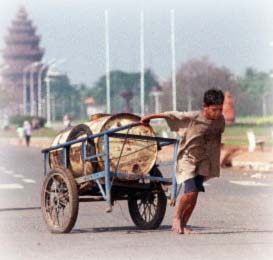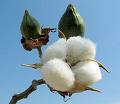November 2009
Monthly Archive
November 28, 2009
Posted by robjbell under
Sustainability | Tags:
Green,
SCM |
Leave a Comment
As the media builds up to the Policy fest on Global warming in Copenhagen; T L has been trawling through the inspirational story of a place that is doing something about it – Las Gaviotas, Columbia.

A house at Las Gaviotas, Colombia
Since the 1940s Columbia has been ravaged by the struggle between Government forces and FARC (Las Fuerzas Armadas Revolucionarias de Colombia). Yet, despite the violence, Columbia has a highly educated and literate population; fertile farmland producing more than a hundred exportable crops and, a wide range of manufacturing industries such as textiles, electrical goods, chemicals and transport equipment. Perhaps more significantly, Columbia is the home of an inspirational working model of how communities can build sustainable low carbon futures. (more…)
November 20, 2009
Posted by robjbell under
T L thinking | Tags:
KVIs |
[4] Comments
“How long is a piece of string?” I asked a physicist. Suddenly, the concept of measurement triggered mention of a ratio of quantities; quantum’s collapse of the wave function; fractals, lasers and elusive accuracy. We settled on what mattered most. The same goes for Logistics in Developing and Emerging countries. Any notion of measuring better, cheaper and faster logistics as we do in the settled and developed world can dissolve in a monsoon, fall apart at a corrupt border crossing or, lose vital freshness in endless traffic jams and warehouses unfit for purpose. Welcome to logistics reality in a globalised marketplace. The question is – are we measuring the right things on the ground in developing and emerging markets and, what are we doing about what this tells us to transform logistics capacity?
As Danny Leipziger, World Bank Vice President for Poverty Reduction and Economic Management has said, ”Being able to connect to global markets is fast becoming a key aspect of a country’s capacity to compete, grow, attract investment, create jobs and reduce poverty”. For those unable to connect, the costs of exclusion are large and growing and this fact makes logistics key to the transformation of the quality of life. For example, the fact that the cost of Logistics can be anywhere from 13 to 20% in one country and 8% in another can make or break a whole industry sector or, even an economy. We need to understand what happens now; how can it be improved and, how will we know when it has? Back to measuring the piece of string.
Elsewhere on this Blog, we covered The World Bank’s Logistics Performance Index . The latest version seems to be for 2007 based on a 2006 survey. I am curious as to the latest numbers (is there a more up-to-date version) but, more interested in what is measured. Interms of logistics; what matters most is all about measures that have relevance, can be calculated accurately and, sourced simply. Have a look at the LPI and then, consider the following:
1. Relevance. Look carefully at the criteria. On the surface of it, they cover the parameters of end-to-end logistics activity comprehensively. I think they are more like the curates egg – good in parts. Look again. Clearly, many of these criteria can be answered by companies working in the Logistics industry but, is the sample robust enough to give an accurate picture from cow to consumer; bee to bottle or loom to room? Do these criteria reflect the asymetrical nature of many supply chains, like textiles, with one end in the High Street of a formal market and the other in a field or a cottage not even owned by the person making the product, component or material. What measures matter?

How many measures do you need?
(more…)
November 15, 2009
Posted by robjbell under
Supply Chain
[7] Comments
Jim Brophy taught me the importance of bees. Each morning, he would look to the hives – he had up to 30 – to check the weather. If the bees were out and about there would be no rain. After a day in the fields at Desart in Kilkenny, he would clean his hands with honey; use it on scrapes or wounds and, on the press next to busts of Napoleon and Padraig Pearse were his prized moulds made out of polished bees wax. He would give talks about plant pollination and how crucial bees are to the harvest and, I recall the wonder of lifting the lid of the hive to see such industry and organisation. *As we develop T L perspectives on high impact industries for the developing and emerging world capable of delivering sustainable and inclusive growth – honey is worth a closer look.

A hive of industry
Honey is big business. Global production of over 1250 metric tonnes generates a $1.5 billion market. Prices vary. China produces over 20% of global production at just over $1,000 per tonne. New Zealand honey fetches over $6,000. Ten producing countries generate over 70% of global production and, the demand far outstrips supply in many countries. The US imports 55% of its demand and this is worth $150 million; the UK produces under 10% and Saudi Arabia 2% of their needs. Honey is a massive opportunity for developing countries to grow an added value agricultural industry at relatively low cost. Let’s look at the history and then, reflect on the potential to use honey to transform a market and boost income for the poor.[1] (more…)
November 12, 2009
This week in the UK, news of a £90 million Lottery win launched a media frenzy and a barrage of questions about what the winners would do with the cash – keep the day job or, go shopping? In 2007, Tullow Oil found a significant oil reserve under the sea off Ghana’s Gold Coast. The IMF estimates that the Jubilee Field will generate $30 billion of revenues by 2030 in a country where 30% of the population are living on less than $1.25 per day. The Lottery advised the UK winners to take an immediate holiday to consider their options. Kofi Annan, a native of Ghana and former UN President, urged Ghana’s Government to ask Norway for advice on what to do about oil. He did not suggest Nigeria.

There's more to oil than oil
Ghana was the first African country granted Independence and, by the Jubilee of 2007 had held 4 (soon to be 5) democratic elections against a backdrop of peace and stability; control of corruption; solid macro economic management; poverty reduction and an effective social contract. The capacity of any government to collect taxes and provide social services sums this stability up: in 1990 Ghana collected 12% of GDP and this had grown to 24% by 2005. Primary school enrollment over the same period grew from 54% to 65%. Will Ghana’s oil have a transformative or, a destructive impact? The jury is out. (more…)
November 7, 2009
Posted by robjbell under
T L thinking
[9] Comments
Writing on the abolition of the British slave trade in 1807, G.M. Trevelyan, the historian, called it “one of the turning circumstances in the history of the world”. As we look to Logistics to make a more transformative impact on global business practice, we could turn to the campaign waged by William Wilberforce and the Abolitionists for inspiration in the quest for an ethical supply chain. Here, T L explores ideas around an inclusive, sustainable and ethical value chain moving goods from source to the consumer; linking it back to ideas set in train by a four hour speech given in the House of Commons in the momentous year of 1789.

A long and winding road
Globalisation has forced companies to develop better, cheaper and faster routes to market – continuosuly. This has generated huge pressures on companies to shorten lead times; place smaller orders with few longer term commitments and, become footloose in search of lowest cost operators. We have seen the growth of Corporate power – many of the majors bigger than the countries they source from and, the move to outsource non core operations creates layers of suppliers that add capacity to Tier 1 but reduce any chance of transparency and challenge ethical consistency down through the tiers. (more…)
November 2, 2009
Posted by robjbell under
Uncategorized
[2] Comments
Cotton is natures pig. Everything can be used. First off, the fibres. These soft white threads – over 80% of the world’s natural fibres – cover the seeds and are strong enough to deal with our sweat, the odd spillage of red wine and, be washed and ironed hundreds of times. Even today, when synthetic fibres account for 60% of the market, cotton hangs on to the rest. Then, the seeds themselves. Rich in protein, they become a major part of oil used in foods. Then, what is left over finds itself in soaps or, as feed for cattle. Finally, what is left of the plant itself is used for animals to bed down on or, as kindling for a fire. Cotton planted in April is harvested in October and spun the following Spring. By the time this white gold is processed into fabrics, a full year has passed. Let’s look closer at the logistics dimension and how inclusive value chains can make a difference.

More inclusive blue sky thinking needed ...
Look at the shirt or blouse that you wear and consider the story behind the label and its price. Can you imagine the farmer that seeded the crop and the inputs that were needed to protect this fragile crop? Do we know the impact that pesticides are having on the environment or, what the intense need for water throughout the process – some 2,600 litres are needed per shirt – is doing to water supplies? Are we clear that many farms are forced to use child labour to survive and, that loan sharks are behind much of the cash that finance the crop? There is a catalogue of social consequences that need to be understood and, a lack of transparency throughout the process – often caused by the agents at every step – that makes dealing with the economic, social and environmental challenges so difficult. (more…)






